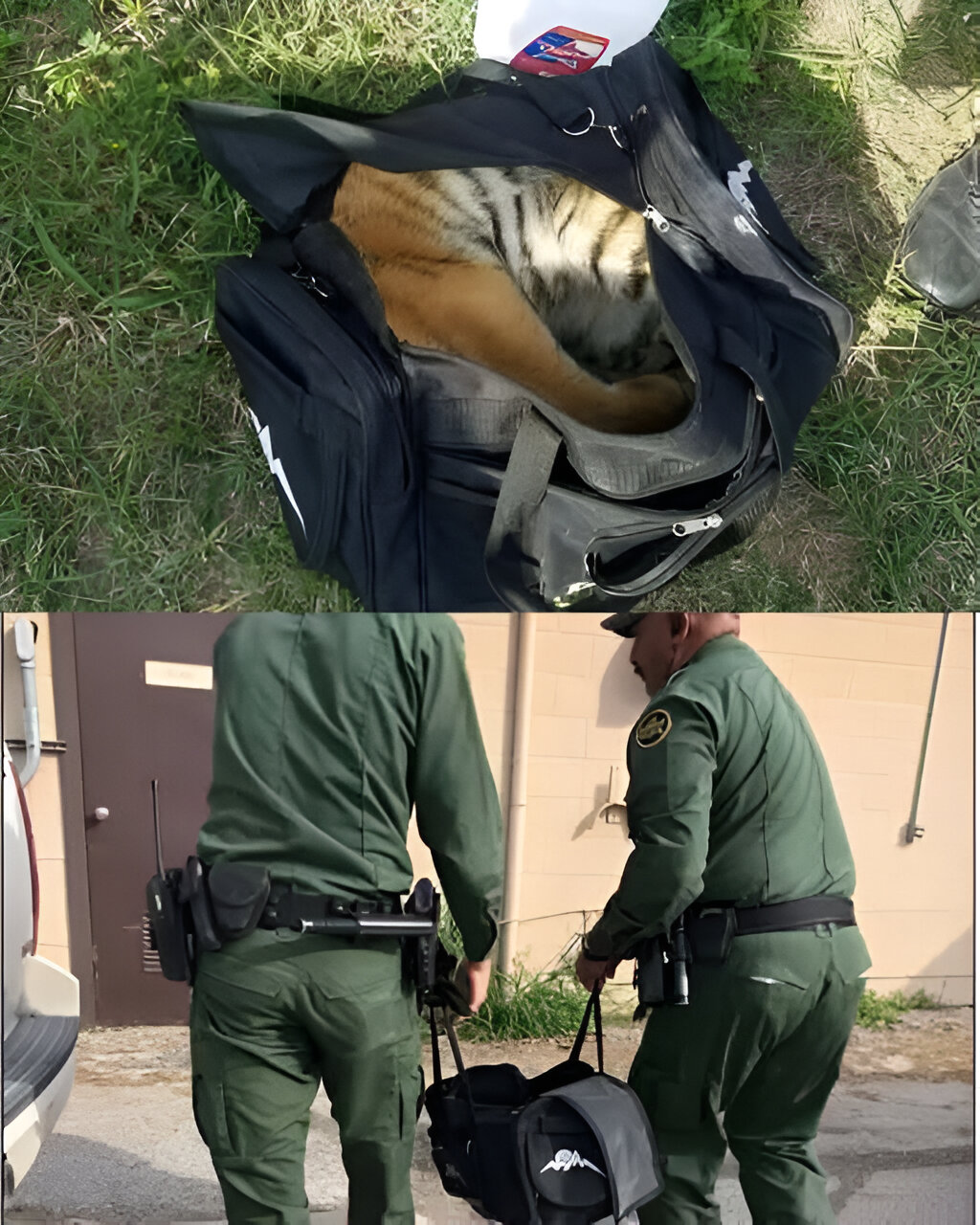
As the sun dipped behind the horizon in Brownsville, Texas, Border Patrol agents scanned the Rio Grande, alert to the shadows that often conceal smugglers at dusk. That evening felt routine—until they noticed three men hurrying along the riverbank with an unusually large duffel bag. When agents moved in, the men bolted into the brush, abandoning the bag as they vanished into the dark.
What the agents found inside stunned them.
Instead of drugs, cash, or weapons, a frail tiger cub lay curled inside—weak, shivering, and barely clinging to life. No more than a few months old, the cub represented a disturbing reminder of just how far the illegal wildlife trade reaches, even into the borderlands.
Agents rushed the animal to the Gladys Porter Zoo, where veterinarians immediately began emergency care. They named him Zuko. Dehydrated and on the edge of collapse, he required warmth, fluids, and round-the-clock monitoring. Slowly, his breathing steadied. His eyes brightened. His small, tentative movements signaled a will to survive.
Zuko’s rescue became more than a feel-good moment—it exposed a global crisis.
Tiger populations in the wild have plummeted to fewer than 3,200 animals, while thousands more live in U.S. captivity, often in unregulated backyards or roadside facilities. Many are victims of the exotic pet trade, passed through the same illicit networks that traffic drugs, weapons, and humans. For agents on the border, encounters like this reveal how deeply organized crime is intertwined with wildlife exploitation.
Zuko’s discovery sparked renewed calls for stronger laws, better training for federal agents, and broader public awareness about the consequences of purchasing exotic animals. Conservation groups emphasized that every illegally traded cub contributes to the suffering and decline of an already endangered species.
In the end, Zuko’s survival became a rare glimmer of hope—a reminder that decisive action can still save lives. His story urges all of us to recognize our shared responsibility in protecting vulnerable animals and confronting the global forces driving them toward extinction.